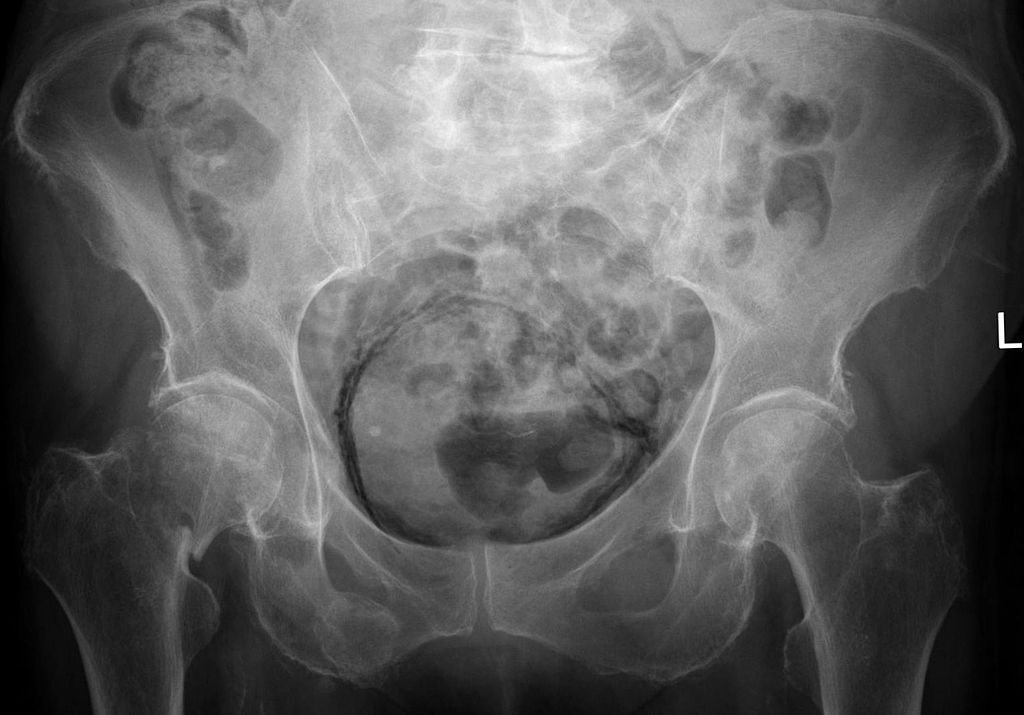Urinary tract infections – also known as cystitis – are extremely common. Around 150m people are affected worldwide each year and one in every three women is expected to suffer at least one attack before they are 24.
But the real figure could actually be somewhere much higher. This is because the urine dipstick, the standard test for cystitis, has been shown to miss at least half of all infections. Alongside this, the standard laboratory culture that’s used to check for bacteria in the urine also misses around 50% of all infections. And if this wasn’t bad enough, around 20-30% of patients won’t respond to the “guideline treatment” of antibiotics.
A lot of these problems can be attributed to current health guidelines, which are out of date and ineffective. And the use of these “guidelines” alongside an over-reliance on poor testing methods means there is a real risk a person with a genuine urinary tract infection (UTI) will be missed and won’t receive adequate treatment.
This can then lead to long-term recurrent infections – and for some patients a lifetime of constant symptoms – which are made worse by sex, exercise, alcohol, certain food and drink, stress and many other of life’s normal events.
Peeing problems
UTIs happen when the urinary tract becomes infected, usually by bacteria. In most cases, this is bacteria from the gut, which is found in faeces – this enters the urinary tract through the urethra, the bit where wee comes out of.
This sounds pretty bad but it has nothing to do with hygiene or cleanliness. Anyone can get a UTI, but they’re particularly common in women, and especially common after sex. This is thought to be because a woman’s urethra is shorter than a man’s, and is closer to their anus.
A typical case of cystitis starts after sex, when a woman finds she needs to wee more than usual, and that going for a wee is difficult – it is slow to start and the stream is reduced. These are the typical early symptoms of a urine infection.
At this point, lots of people – even doctors – might believe the best advice is to drink plenty of water to “get things going”, but there is no evidence to justify this and it could actually make matters worse. This is because increased fluid intake dilutes the urine of natural antibodies, immune chemicals and antibiotics. Plus, the offending microbes are stuck to the bladder cells so they cannot be simply washed away.
As the infection progresses, it can lead to pain and burning when going for a wee and a general feeling of discomfort around the bladder. At this point, most people will go to their doctors and will have their urine tested with a dipstick – but given these miss at least half of infections it can hardly be considered a reliable method of testing.
Ignoring the evidence
Left untreated, patients often become much worse – leading to return visits to the doctor. Another dipstick test at this point might reveal there is a “trace positive result” so the urine is sent to be “cultured” at the hospital – this identifies if there are any germs in the urine that could cause a urinary tract infection. But, again because a high number of infections are missed, culturing urine is also problematic.
A typical treatment would now be three days of an antibiotic – which could lead to the patient feeling partially better but not cured. This happens in about 20% to 30% of cases, whether prescribed for three days or 14 days – but we still don’t really know why some people respond and others do not.
At this point, because of the limited nature of current testing methods, a urine culture may well be reported as negative and so “diagnostically” speaking the patient is declared free of infection. This is despite the continued presence of pain and tenderness when the bladder is pressed – indicating signs of infection and inflammation.
From here, if not treated properly, the infection might progress to a hospital admission with a kidney infection, or ongoing recurrent infections for the rest of a patient’s life. This recurrence happens because early on in the infection the responsible microbes will have organised themselves into what is known as a “biofilm” which are located on the cell surfaces or inside the bladder cells.
Hard to beat
Biofilms are capable of protecting “delinquent microbes” from immune attack, and reduce the effectiveness of antibiotics – which is what happens in these types of bladder infections.
This may mean that a higher, longer dosage is needed. This goes against the current guidelines for treatment, and so is often not available to patients.
All of this demonstrates how we have become too reliant on tests, and imagine wrongly that they can give us clear “yes” or “no” answers to ease our doubts – they cannot. Instead, we should get back to the old clinical bedside skills that were developed years ago.
While I have been working in this field I have come to realise that in many cases, clinicians are using poorly equipped tests because the numerous inspectors, governors, guideline enthusiasts and dogmatists compel them to do so. This must change. We need to start scrutinising these long-held beliefs with healthy scepticism, reviewing approaches to diagnosis and patient care, because lives depend on it.
 James Malone-Lee does not work for, consult, own shares in or receive funding from any company or organization that would benefit from this article, and has disclosed no relevant affiliations beyond the academic appointment above.
James Malone-Lee does not work for, consult, own shares in or receive funding from any company or organization that would benefit from this article, and has disclosed no relevant affiliations beyond the academic appointment above.
This article was originally published on The Conversation. Read the original article.




 U.S. Reveals 2026 Medicare Star Ratings: Aetna, UnitedHealth Lead in Quality Scores
U.S. Reveals 2026 Medicare Star Ratings: Aetna, UnitedHealth Lead in Quality Scores  Eli Lilly Becomes First Pharma Giant to Hit $1 Trillion Amid Soaring Weight-Loss Drug Demand
Eli Lilly Becomes First Pharma Giant to Hit $1 Trillion Amid Soaring Weight-Loss Drug Demand  FDA Memo Raises Questions About Possible COVID-19 Vaccine Links to Rare Child Deaths
FDA Memo Raises Questions About Possible COVID-19 Vaccine Links to Rare Child Deaths  Pfizer Sues Novo Nordisk Over Alleged Tactics to Block Obesity Drug Competition
Pfizer Sues Novo Nordisk Over Alleged Tactics to Block Obesity Drug Competition  Eli Lilly’s Inluriyo Gains FDA Approval for Advanced Breast Cancer Treatment
Eli Lilly’s Inluriyo Gains FDA Approval for Advanced Breast Cancer Treatment  Cogent Biosciences Soars 120% on Breakthrough Phase 3 Results for Bezuclastinib in GIST Treatment
Cogent Biosciences Soars 120% on Breakthrough Phase 3 Results for Bezuclastinib in GIST Treatment  Pfizer Boosts Bid for Metsera Amid Intensifying Rivalry with Novo Nordisk in Obesity Drug Market
Pfizer Boosts Bid for Metsera Amid Intensifying Rivalry with Novo Nordisk in Obesity Drug Market  Pfizer Secures $10 Billion Deal for Obesity Drug Developer Metsera, Outbids Novo Nordisk
Pfizer Secures $10 Billion Deal for Obesity Drug Developer Metsera, Outbids Novo Nordisk  Merck Nears Acquisition of Cidara Therapeutics at Significant Premium
Merck Nears Acquisition of Cidara Therapeutics at Significant Premium  Novartis to Acquire Avidity Biosciences for $12 Billion to Strengthen Rare Muscle Disorder Portfolio
Novartis to Acquire Avidity Biosciences for $12 Billion to Strengthen Rare Muscle Disorder Portfolio  U.S. Experts to Reassess Newborn Hepatitis B Vaccination Guidelines Amid Growing Debate
U.S. Experts to Reassess Newborn Hepatitis B Vaccination Guidelines Amid Growing Debate  Novo Nordisk Appoints Greg Miley to Lead Corporate Affairs Amid U.S. Drug Pricing Pressure
Novo Nordisk Appoints Greg Miley to Lead Corporate Affairs Amid U.S. Drug Pricing Pressure  U.S. Backs Bayer in Supreme Court Battle Over Roundup Cancer Lawsuits
U.S. Backs Bayer in Supreme Court Battle Over Roundup Cancer Lawsuits  Obamacare Premiums Set to Double in 2026 as Subsidy Expiration Looms Amid U.S. Shutdown
Obamacare Premiums Set to Double in 2026 as Subsidy Expiration Looms Amid U.S. Shutdown 
































